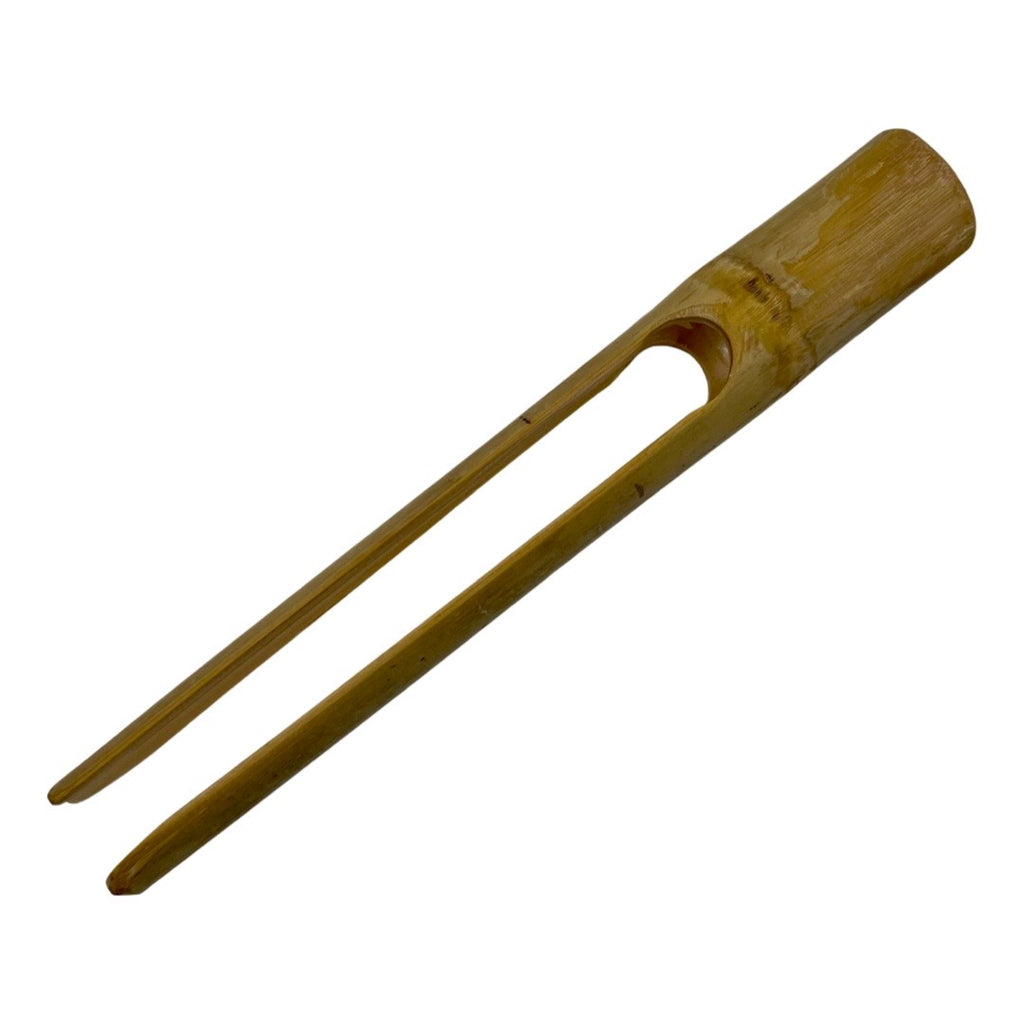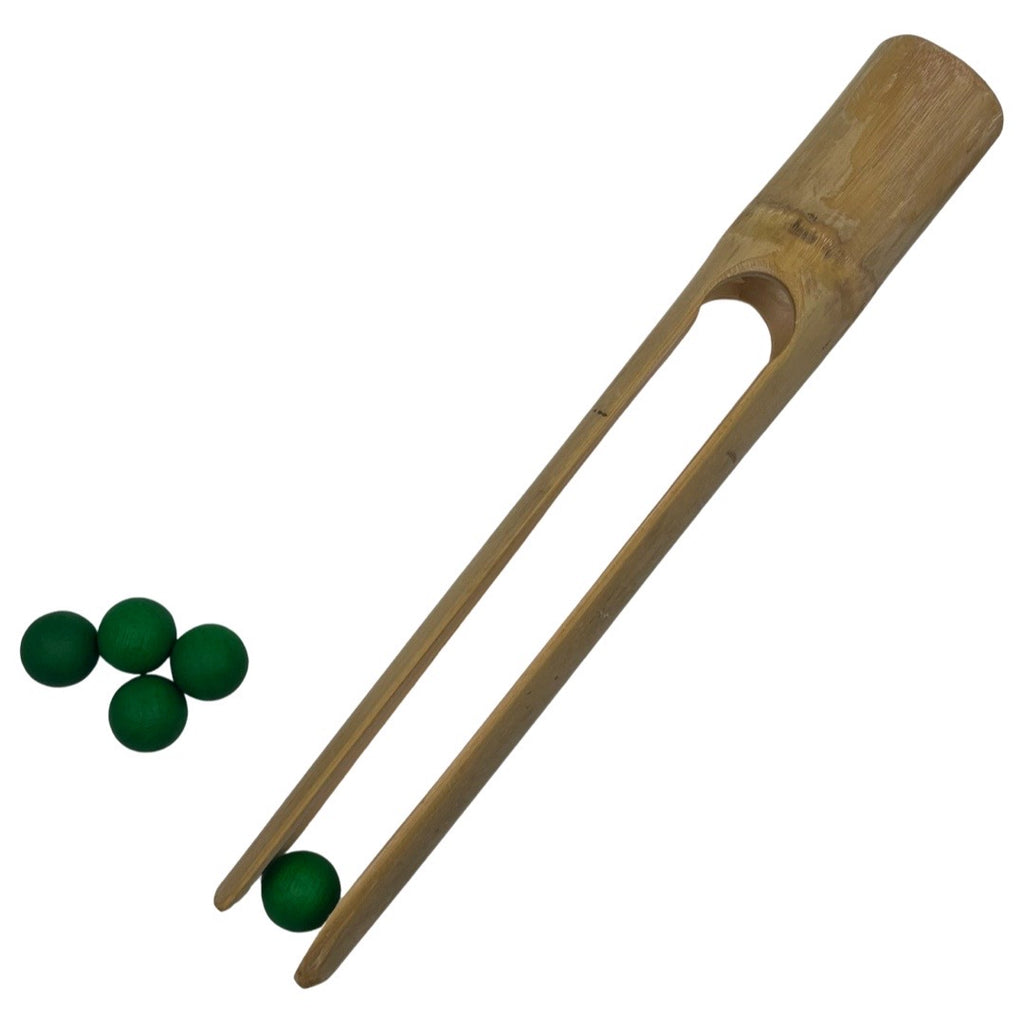Bamboo Tongs
These beautiful Bamboo Tongs are approximately 25cm in length. They are handcrafted and sturdy, designed to last many years of use for fine motor experiences and loose parts play.
Please note: The accessories in the product images are for illustrative purposes only. They do not come with the tongs, but can be purchased separately as our Leaf Trays or Sorting Balls.
The span of the tongs - that is, the distance between the two sides when the tongs are in their resting state - is approximately 4cm at the point where a child is likely to grip them.
The span is really the more important measurement when considering tongs - if the resting span is too wide then it can be hard for a child to arrange their grip initially and to maintain this during use. Younger children (2 - 3 years of age) will often resort to using two hands together when using broad tongs and so this is not ideal if the intended purpose of the tool is to promote fine motor control and pincer grip. These short-spanned tongs are fantastic for younger children to begin to use a single-hand pincer grasp and for older children to focus on refining that hold.
Tongs and tweezers are such useful tools, in terms of general daily use and also for the 'Practical Life Trays' that are used in many Montessori-inspired homes and classrooms.
In daily use they assist with food preparation and serving - particularly in a classroom community, where the use of tongs rather than fingers helps to promote strong health and hygiene. In activity 'trays' tongs are often used for transferring exercises. This is largely because of the noticeable use of the 'pincer' grip in manipulating the tongs. The use of tongs help to encourage and inspire a strong, dexterous pincer grip in a way that is 'incidental' - that is, the child is not consciously aware that it is a pre-writing exercise as this purpose is hidden within an enjoyable and non-threatening activity.
The use of bamboo, rather than the more common metal tongs, offers a 'point of interest' to invite the child's interest in this particular tool.



